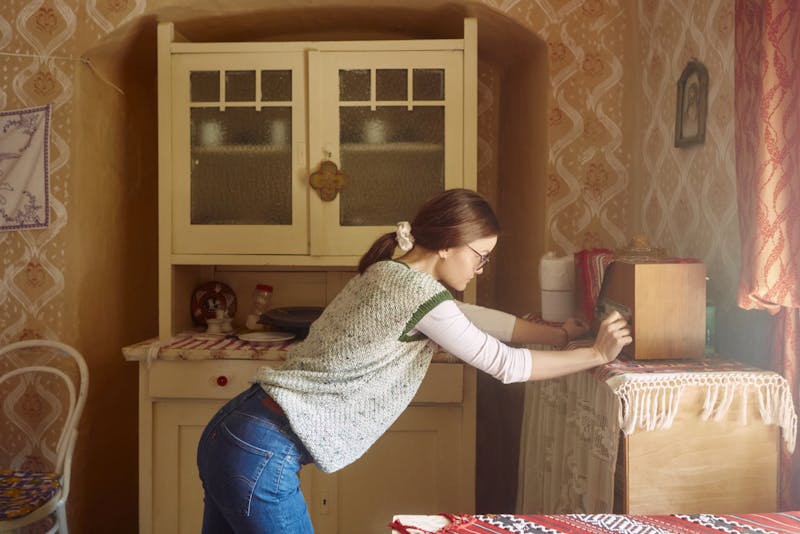- Identify the source first — Determine whether the odor comes from mold, dust, old fabrics, or poor ventilation before cleaning.
- Improve air circulation — Open windows, use fans, and replace HVAC filters to let fresh air in and stale air out.
- Deep clean all surfaces — Wash walls, floors, carpets, and upholstery to remove embedded odors from years of buildup.
- Eliminate mold and moisture — Use natural cleaners like vinegar and baking soda, and control humidity with dehumidifiers.
- Refresh kitchens and bathrooms — Regularly clean drains, tiles, and appliances to stop odors at their source.
- Use natural deodorizers — Baking soda, activated charcoal, and essential oils help maintain a lasting fresh scent.
- Prevent recurrence — Keep up with routine cleaning, humidity control, and ventilation to ensure your home stays fresh year-round.
An old house carries character, charm, and history—but often, it also carries an unpleasant odor that seems to linger no matter how many air fresheners you use. That “old house smell” can result from years of trapped moisture, poor ventilation, mold, dust, or the accumulation of everyday household odors that never quite go away. For homeowners, especially those who have just moved into an older property, this musty scent can be a persistent challenge.
Fortunately, getting rid of the old house smell is not only possible but also manageable with the right approach. This comprehensive deep cleaning guide will walk you through each step, from identifying the source of odors to applying targeted cleaning techniques that restore freshness and comfort.
Whether you’re revitalizing your family home or preparing to sell, following these steps will help your house smell as good as it looks.
Understanding the Causes of Old House Smell
Before tackling the problem, it’s important to understand where the odor comes from. Old house smell is not just “old air.” It’s the result of multiple factors that build up over time, creating a musty or stale atmosphere. Knowing these causes helps you choose the most effective cleaning strategies for your home.
Common Causes Include:
- Moisture and humidity: Poor ventilation and trapped moisture are major contributors. When humidity lingers, it creates the perfect environment for mold and mildew.
- Mold and mildew growth: These microorganisms thrive in damp, dark spaces—basements, bathrooms, and under carpets are common hotspots.
- Dust accumulation: Dust and dander build up on furniture, walls, and flooring, absorbing odors over the years.
- Old carpets and fabrics: Soft surfaces like curtains, upholstery, and rugs retain odors from smoke, pets, and previous occupants.
- Aging materials: Wooden beams, wallpaper glue, and even old insulation can emit musty scents as they deteriorate.
Identifying the root cause is the first step toward a lasting solution. Once you know where the smell originates, you can focus your cleaning efforts for maximum effectiveness.
Step 1: Air Out Your Home

The first and most important step in eliminating the old house smell is improving air circulation. Fresh air dilutes stale odors and helps remove airborne contaminants.
How to Properly Air Out Your Home:
- Open windows and doors: Start by opening all windows and doors on a breezy day to create cross-ventilation.
- Use fans: Place fans strategically to push old air out and pull fresh air in. Box fans and exhaust fans are particularly effective.
- Replace air filters: Dirty filters recirculate old smells. Replace HVAC filters every 1–3 months.
- Clean vents and ducts: Professional duct cleaning can make a huge difference in older homes that have years of dust buildup.
Airing out your home not only removes immediate odors but also prepares your space for deeper cleaning steps.
Step 2: Identify and Eliminate Mold and Mildew
If your home smells musty, mold and mildew are likely culprits. They thrive in moist environments and can spread quickly if ignored.
How to Spot Mold and Mildew:
- Check hidden spots: Look behind furniture, under sinks, around windows, and in basements.
- Use your nose: A damp, earthy smell is a strong indicator.
- Inspect walls and ceilings: Stains or discoloration often signal moisture problems.
Cleaning and Prevention Tips:
- Use a vinegar solution: Mix equal parts white vinegar and water. Spray on affected areas and let it sit for an hour before wiping clean.
- Apply baking soda paste: Great for surfaces like tiles and grout.
- Dehumidify: Use a dehumidifier to keep indoor humidity below 50%.
- Fix leaks immediately: Prevent future moisture buildup by addressing plumbing or roof leaks.
Tackling mold and mildew not only eliminates the smell but also protects your family’s health and the home’s structural integrity.
Step 3: Deep Clean Carpets, Rugs, and Upholstery
Carpets, rugs, and fabric furniture act like sponges, absorbing odors over time. Even if they look clean, they may be holding decades of embedded smells.
How to Get Rid of Old House Smell from Soft Surfaces:
- Vacuum thoroughly: Use a vacuum with a HEPA filter to trap dust and allergens.
- Steam clean: Rent or hire a professional steam cleaner for deep penetration. Steam helps remove bacteria and neutralize odors.
- Sprinkle baking soda: Let baking soda sit overnight on carpets and upholstery, then vacuum it up.
- Wash or replace curtains: Machine wash the washable curtains or take them to a professional cleaner.
- Use fabric-safe odor eliminators: Choose natural sprays containing essential oils like lemon, lavender, or eucalyptus.
If odors persist after multiple cleanings, it might be time to replace carpets or padding entirely—especially in moisture-prone areas like basements.
Step 4: Clean Walls, Ceilings, and Floors
Old house smells often cling to painted walls, wood floors, and ceilings. Even if they look clean, they can trap airborne particles and residues from years of use.
Cleaning Walls and Ceilings:
- Dust first: Use a dry microfiber cloth or duster to remove loose particles.
- Wash with a mild detergent: Mix warm water with a gentle cleaner or vinegar solution. Avoid over-wetting the surface.
- Repaint if necessary: If odors persist, consider repainting with an odor-blocking primer and fresh paint.
Cleaning Floors:
- Hardwood: Use a pH-neutral cleaner and avoid excessive water. Polish for a fresh finish.
- Tile and laminate: Mop with a vinegar-water mixture or a mild cleaning solution.
- Carpeted areas: Deep clean or shampoo as covered earlier.
Regularly cleaning structural surfaces eliminates embedded odors and freshens up your entire home.
Step 5: Refresh the Kitchen and Bathroom
The kitchen and bathroom are common sources of persistent smells, especially in older homes where grime and moisture build up unnoticed.
Kitchen Cleaning Checklist:
- Empty and clean the refrigerator: Use baking soda or activated charcoal to neutralize odors.
- Wipe down cabinets and appliances: Old grease and food particles cause lingering smells.
- Clean garbage disposal: Grind ice cubes with lemon slices to deodorize naturally.
- Wash trash bins: Rinse with vinegar and water weekly.
Bathroom Cleaning Checklist:
- Scrub tiles and grout: Use baking soda paste or a dedicated tile cleaner.
- Clean drains: Pour baking soda followed by vinegar to dissolve buildup.
- Wash shower curtains: Mildew often hides here.
- Ensure proper ventilation: Install or upgrade exhaust fans to prevent humidity buildup.
These two areas are odor magnets—keeping them spotless makes a significant difference in how your entire house smells.
Step 6: Inspect the Basement, Attic, and Crawl Spaces
Basements, attics, and crawl spaces are often the hidden sources of an old house smell. Poor ventilation and dampness in these areas make them prone to mold, mildew, and decay.
How to Freshen These Areas:
- Declutter: Remove old boxes, fabrics, and paper materials that trap moisture.
- Clean thoroughly: Sweep and vacuum to remove dust and cobwebs.
- Seal cracks: Prevent water intrusion by sealing wall or floor cracks.
- Use a dehumidifier: Essential for maintaining a dry environment.
- Install vents: Improve airflow in closed spaces.
If your basement or attic has severe odor issues, consider professional waterproofing or mold remediation services.
Step 7: Replace or Clean HVAC Filters and Systems
Your HVAC system can either circulate fresh air or recirculate old, smelly air. Regular maintenance ensures your system works efficiently and doesn’t contribute to lingering odors.
Maintenance Tips:
- Change filters regularly: Replace every 1–3 months, depending on usage.
- Clean air ducts: Have them professionally cleaned every 3–5 years.
- Wipe vents and registers: Dust can accumulate and trap odors.
- Use air purifiers: HEPA or activated carbon purifiers help remove airborne particles and odors.
A well-maintained ventilation system significantly improves indoor air quality and helps eliminate the old-house smell at the source.
Step 8: Deodorize and Maintain a Fresh Scent Naturally

Once you’ve removed the source of odors, it’s time to maintain a clean, pleasant atmosphere. Avoid artificial fragrances that simply mask smells—opt for natural, long-lasting solutions instead.
Natural Deodorizing Ideas:
- Baking soda: Place open boxes in closets, basements, and under sinks to absorb odors.
- Activated charcoal: Use charcoal bags for a sustainable, chemical-free deodorizer.
- Essential oils: Diffuse lavender, lemon, or tea tree oil for a fresh scent.
- Houseplants: Spider plants, peace lilies, and snake plants help purify air naturally.
- Simmer pot recipes: Simmer citrus peels, cinnamon sticks, and cloves for a cozy aroma.
Maintaining these natural remedies ensures your home continues to smell clean and inviting long after the deep clean is done.
Step 9: Prevent the Return of Old House Smells
Eliminating odor is one thing—keeping it from coming back is another. Preventive care is the key to maintaining a consistently fresh-smelling home.
Ongoing Maintenance Tips:
- Ventilate daily: Open windows for at least 10 minutes a day when the weather allows.
- Control humidity: Use dehumidifiers or air conditioners in humid climates.
- Clean regularly: Dust, vacuum, and mop weekly to avoid buildup.
- Avoid clutter: Keep storage areas organized and free of moisture-prone materials.
- Inspect plumbing and roofing: Address leaks promptly to prevent hidden mold growth.
A proactive cleaning and ventilation routine will ensure your home remains odor-free for years to come.
Conclusion: Reclaim the Freshness of Your Home
Getting rid of old house smell requires more than just masking odors—it involves identifying causes, deep cleaning, and maintaining a fresh environment. By following this step-by-step deep cleaning guide, homeowners can transform musty, stale spaces into clean, welcoming ones.
From improving ventilation and tackling mold to refreshing carpets and using natural deodorizers, every action you take contributes to a healthier and more comfortable living space. Remember, an old house doesn’t have to smell old—with the right care, it can smell like home again.

